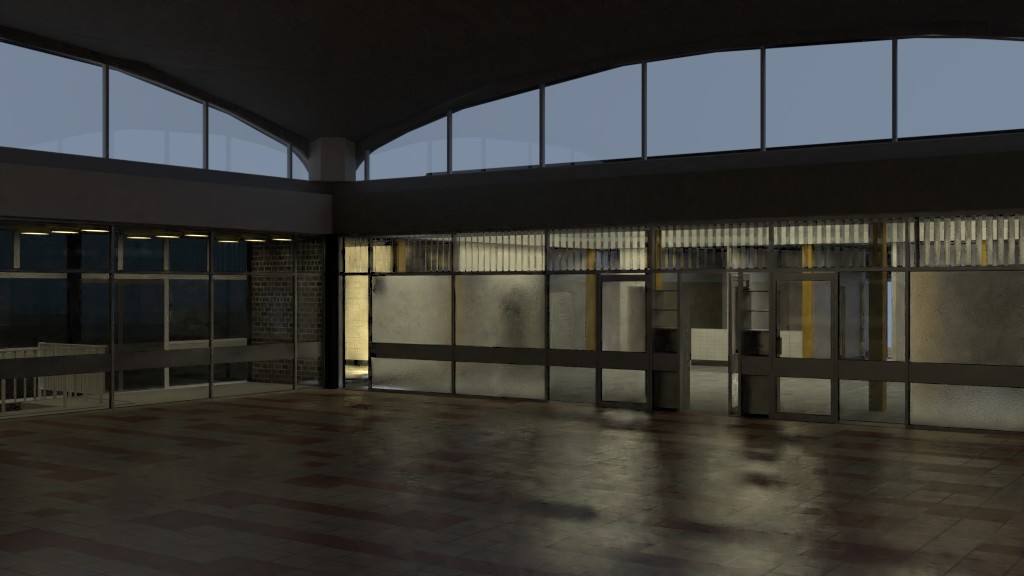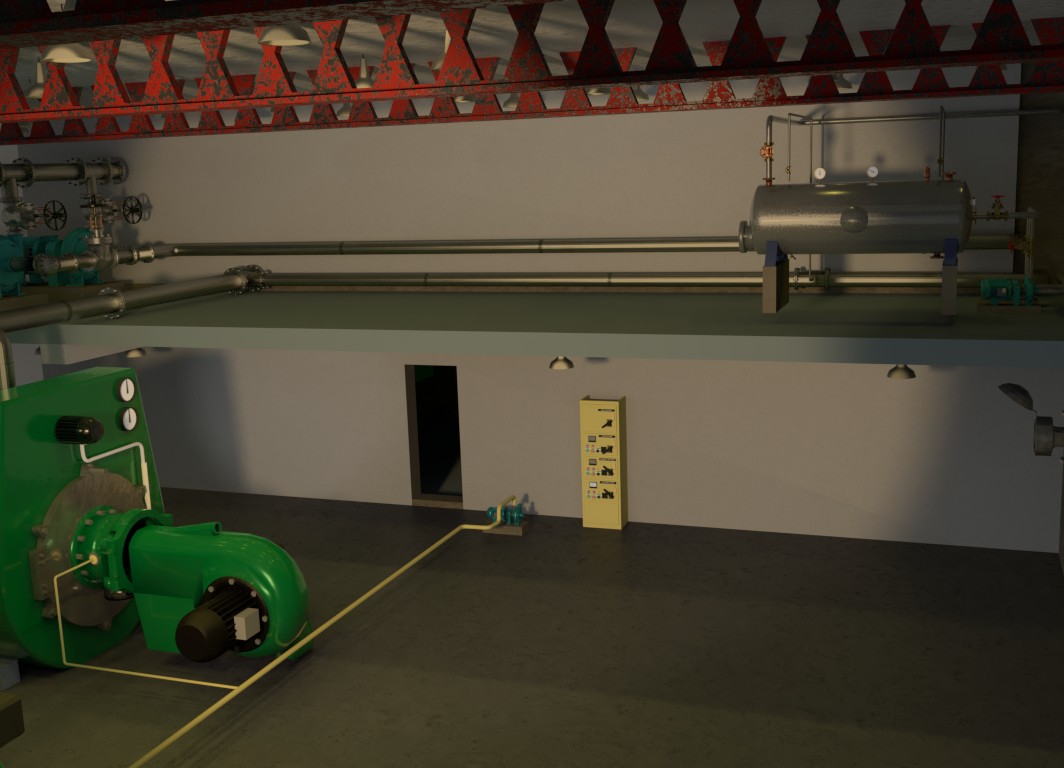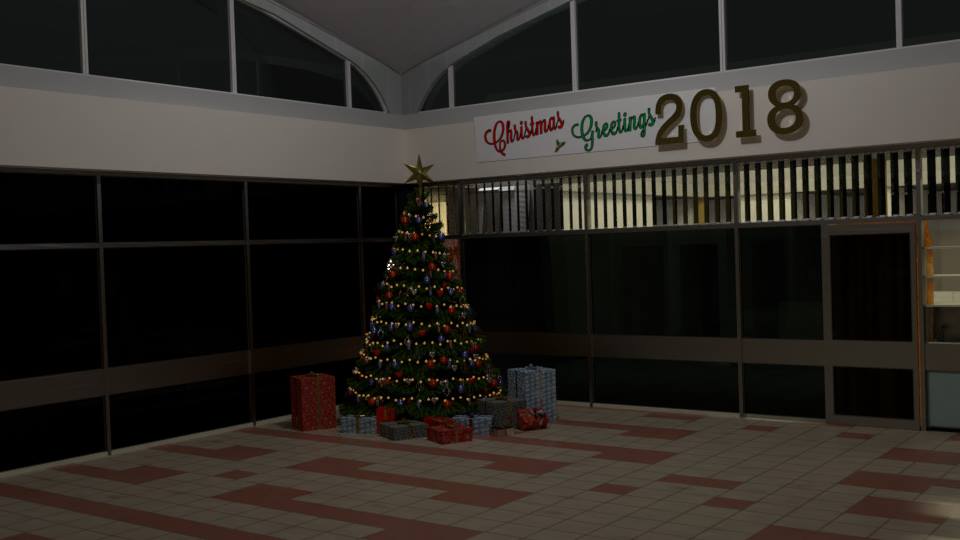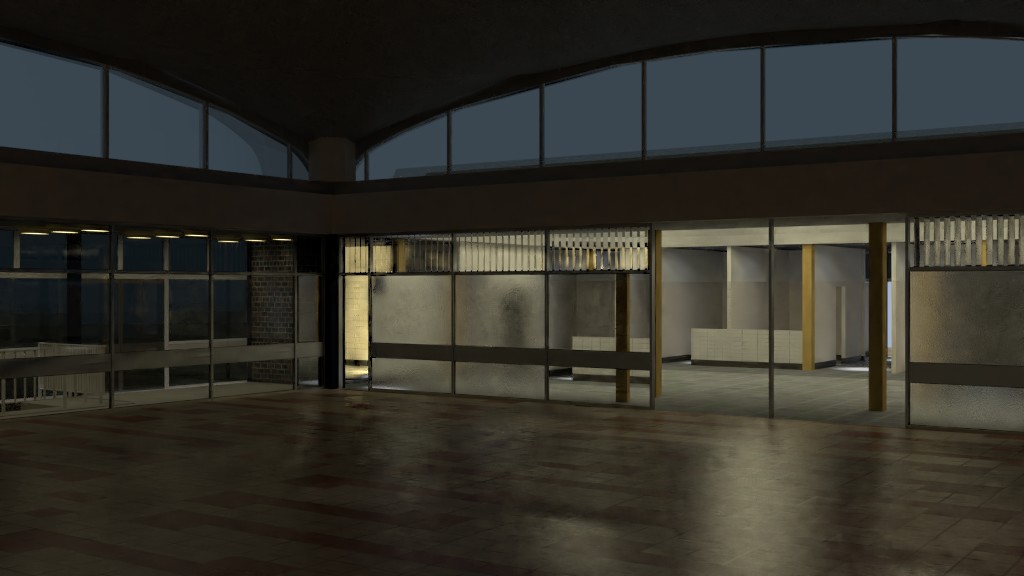
I found materialiq mentioned on a Blender Facebook group and thought it would save me a lot of time and improve the results of my renders. Materialiq is a library of materials and textures designed for architectural visualisation. It was a bit of a risk as it was not cheap (around €40) but I am pleased with the results at what is an early stage.
My first experiment was the New Year boiler room model (not based on the OS one at all but some of the equipment is based on that from OS). When I tried to render this, it crashed and I could only get a very poor quality result. Using the preview render was giving better results. Having looked into this further, it appears the materials were set to 4K quality, much higher than is needed. Changing it to 1K allows high quality renders to complete and doesn’t seem to cause much loss of quality at all. I guess that would only be an issue if there were objects close to the camera. As I missed out on a high quality new year render then here it is after changing to 1K textures although I had deleted the text and photo frame objects.

I then made a ‘branch’ copy of the Staff Restaurant model to test the new materials and am very pleased with the results, particularly the glass. The glass I was using in the servery and stair lobby screen partitions was much too dark and the opacity was too high. That served a useful purpose in hiding the incomplete kitchen and stair lobby flooring/ceiling but the frosted glass materialiq material serves that purpose better! Now these areas are nearing completion then the realistic standard transparent glass looks great. Compare the first image below, which was before using the materialiq materials, with the new renders below it:


The image above is without the central bays of the servery screen. The first two bays (excluding the door) of the servery have frosted glass and the rest standard glass apart from the right-hand narrow bay of the stair lobby screen and the dome windows which both use darkened glass (I was just experimenting with the different materials).

The second render, above, has the full servery apart from the door at each end, with standard glass for the central three bays and still the frosted glass for the two to their left. The windows that had darkened glass before were changed to standard glass, which adds a little more light but it is still too dark.
Most of the other materials in these scenes were using materialiq materials, including plastered ceilings and walls, aluminium for the internal windows and painted wood instead of flat colours for the skirting boards/window frames etc. The floor is not using materialiq as I have not yet figured out how image textures/UV mapping works.
The verdict from my experiments with materialiq? Yes, I am going to make use of this, particularly as I paid for it! Whether I use it for all the materials in the Restaurant/main OSHQ Maybush model is something I am carefully considering. Realistically, I think a hybrid of materialiq for glass, metal, concrete/plaster etc and standard Blender Cycles materials for things like bricks, tiles etc.
It’s a bit of a pain as the recommended method of work is to import all the materialiq textures and their corresponding objects into a dedicated layer in each Blender model rather than linking or appending them. I think a careful one-at-a-time approach is best in the immediate future.
Next steps
- Experiment with the HDR environments that come with materialiq (HDRs create an ‘environment’ for models to be located in so provide a background and sun lighting that is endlessly customisable.
- Improve the internal lighting as the recent renders are dark (changing the HDR settings will hopefully increase the sunlight).
- The servery still needs final tweaks to the doors.
- Internal metal double doors – these are almost done and just need positioning.
- Reduce the ‘de-noise’ setting for rendering. This is a really useful function that was introduced in the most recent version of Blender but it can cause distortion and the restaurant floor looks like it is affected.